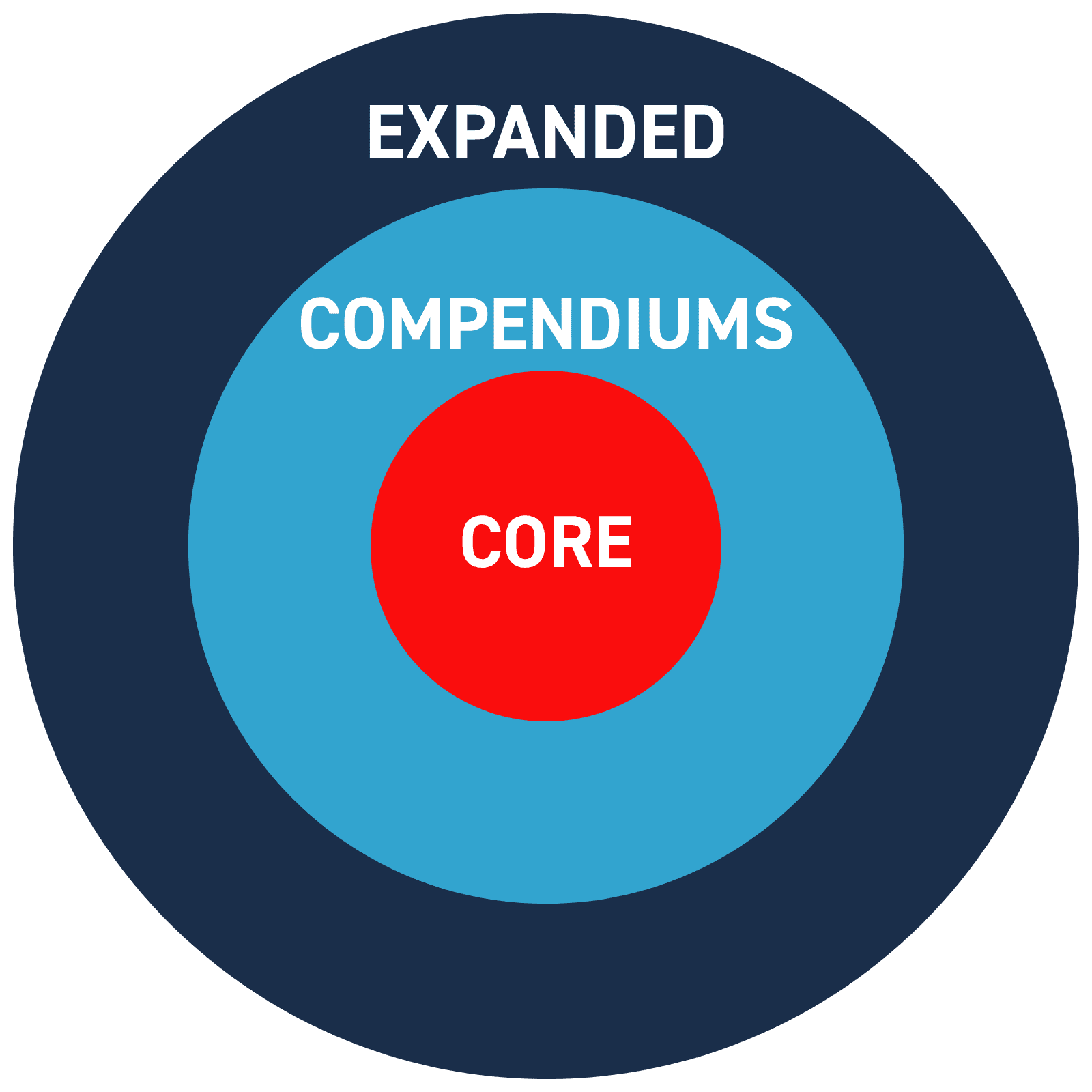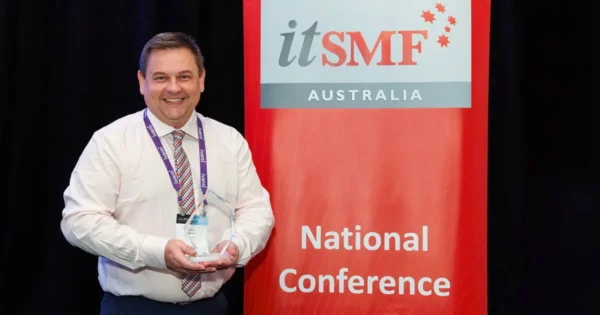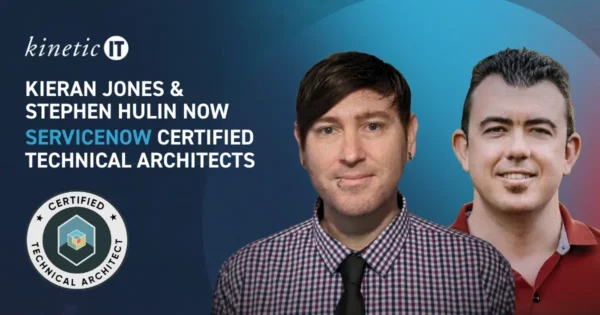Where were you roughly nine years ago? That’s how long it has been since the original Service Integration & Management Body of Knowledge was introduced – as we now know, much has changed in the world since then.
Known within the industry as SIAM, the Service Integration & Management landscape continues to evolve as the world does. With the advent of new technologies such as artificial intelligence, a refresh became essential to ensure this methodology keeps pace with the latest industry developments and organisational needs.
The original SIAM Foundation Body of Knowledge debuted in 2017, followed by the more comprehensive SIAM Professional in 2018, with both receiving updates in 2020.
However, the years since have brought significant shifts and new considerations, prompting a closer look at how SIAM should be designed and operated in today’s environment.
Consider the example of artificial intelligence (AI), a topic that’s front and centre in today’s discussions. While AI may sometimes be viewed as simply another advanced tool, its true impact goes much further.
AI is fundamentally reshaping how we monitor, manage, and optimise interactions among multiple service providers. It enables us to collect, analyse, and act on data across the entire service ecosystem in ways that were previously impossible.
This means we can now identify trends, pinpoint issues, and drive continuous improvement with greater speed and accuracy – making the delivery of integrated, end-to-end services more effective and adaptive than ever before.
Another evolution in our corporate world is ESG, the acronym for Environmental, Social and Governance. ESG is a holistic concept about an organisation’s ability to create and sustain long-term value in a rapidly changing world, and managing the risks and opportunities associated with these changes.
Neither AI or ESG are new, nor specific to SIAM, but both are examples of significant impacts to the supply chain and the management of it. Thus, these evolutions require informed approaches within SIAM models.
On top of this, service management practices continue to multiply and shift at a rapid pace. For example, ISO 20000 – the benchmark for service management – has recently released Part 14, offering fresh guidance on applying Service Integration and Management, with the effort chaired by Kinetic IT’s Michelle Major-Goldsmith.
Meanwhile, interest in frameworks like SAFe (Scaled Agile) is surging globally, reflecting a broader move towards adaptive and scalable approaches.
To ensure SIAM remains relevant and practical, it’s essential that these evolving practices and standards are integrated into SIAM theory and guidance.
Ensuring SIAM Stays Relevant in a Changing Landscape
The SIAM Body of Knowledge has become the foundation for many organisations’ SIAM models and designs, not to mention the thousands of practitioners who’ve earned Foundation or Professional certification.
Naturally, no-one wants a new version that is so radically different that it breaks what’s already working, especially if it means extra cost to ‘upgrade’.
So, one key design goal of the 2025 refresh was to keep the core of SIAM intact.
At the same time, we knew it had to be agile and adaptable, not just to reflect recent changes, but to keep up with whatever comes next.
Because let’s be honest: ITIL 5 could drop tomorrow, new AI legislation might land next week, and in a year, generational shifts and global events could reshape how we all work. Remember COVID-19?
The 2025 refresh will enable customers and professionals alike to navigate this constant state of change.
Principles for the Updated SIAM Bodies of Knowledge
The approach to updating the SIAM Body of Knowledge was guided by three core principles to ensure the refreshed materials remained valuable and practical for the community and adjacent industries.
1. Preserve and Respect the Foundations
It was essential that the updated SIAM Body of Knowledge continued to honour the original foundations that have proven effective over time.
The aim was not to rewrite or discard what already works, but to ensure the foundational concepts and practices remained at the heart of SIAM guidance.
2. Integrate Recent Lessons and Changes
The update process considered the significant developments and changes that have occurred over the past five years. Many are mentioned already in this article.
Incorporating these lessons ensured that the SIAM Body of Knowledge reflected the latest thinking, industry trends, and organisational needs, keeping them relevant in today’s rapidly evolving service management landscape.
3. Design for Future Adaptability
A key objective was to make the updated SIAM Body of Knowledge future-friendly.
The structure was designed to be flexible and easy to update or expand, so that new advancements, practices, or requirements can be incorporated without needing a complete overhaul each time.
This ensures that the guidance remains current and continues to support organisations as the landscape evolves.
A layered model
The 2025 SIAM Body of Knowledge consists of a layered model.

The core covers SIAM Foundation and Professional, focusing on SIAM theory.
Within the core is the second layer, which includes Compendiums. These publications explore specific topics in the context of SIAM, such as SIAM and AI.
The outermost layer comprises community authored content, including whitepapers, case studies, templates and other practical resources.
How it was created
It all started in November last year, when more than 140 passionate SIAM practitioners volunteered to support the SIAM refresh — giving us a fantastic pool of contributors to work with.
Led by us as co-architects, alongside Scopism founder and Director Claire Agutter, we began by reviewing the current SIAM Body of Knowledge and deciding what needed to be refreshed.
This led to a series of work packages, like the ‘SIAM Foundation update’ or the new ‘SIAM and AI Compendium’.
Each work package had a Lead Author, supported by a group of authors and reviewers.
Kinetic IT crew played a role in the various work packages, from being a Lead Author to Reviewer of the content created. We’d like to thank Brett Allen, Gail D’Souza, Todd Bridgeman, Fabio Plos, Stacy Thomas and Ian Christie for their efforts in this regard.
Not everything made the cut. Volunteers have day jobs, and life happens. We started with 16 Compendiums, but not all could be completed this round.
That’s okay, thanks to the flexible SIAM BoK structure, those can be revisited, expanded, or released at a later stage.
Coordinating the efforts of contributors from around the world presented several challenges. Good thing we’re experts in managing complexity!
To ensure everyone remained aligned and the project progressed smoothly, the Lead Architects implemented several effective strategies.
They utilised clear tools to communicate and organise tasks, held monthly meetings to maintain momentum, and recorded sessions so that all participants could stay informed regardless of time zone or availability.
Additionally, a regular newsletter was distributed to keep everyone updated on progress and key developments, fostering a sense of community and shared purpose among the international teams.
The 2025 SIAM Body of Knowledge
The most significant shift in the 2025 SIAM Body of Knowledge is that the two previously separate books – Foundation and Professional – are now recognised collectively as the Body of Knowledge, forming integral parts of a unified resource.
While there are still distinct Foundation and Professional sections, these are no longer standalone publications but are fully woven into the broader SIAM model.
This ensures that the core SIAM principles remain intact, with the emphasis now placed on SIAM as a holistic strategic management approach that closely aligns with business outcomes and the service organisation’s operating model.
Specific elements that were overly detailed or subject to frequent change, such as in-depth processes or external practices, have been streamlined or removed, enhancing the Body of Knowledge’s relevance and adaptability in today’s dynamic environment.
Introducing the First Batch of New SIAM Compendiums
The first release of new SIAM Compendiums marks an important milestone in enhancing the practical application of SIAM within organisations.
These Compendiums have been designed to go beyond the core theory, providing additional depth and actionable guidance required to implement SIAM effectively in real-world scenarios.
Within these Compendiums, practitioners will find detailed process guides, offering step-by-step instructions for putting SIAM principles into operation.
There is an emphasis on end-to-end measurement, equipping organisations with frameworks and metrics to assess and refine their service integration efforts.
The Compendiums also address essential areas such as procurement and experience management, ensuring that the complexities of sourcing and managing supplier relationships are clearly understood.
Further to this, there is dedicated guidance on leveraging artificial intelligence and automation, supporting organisations in harnessing these technologies to optimise and innovate within their SIAM models.
And that’s just the start. We’re already working on more Compendiums covering topics like Trust in SIAM, SIAM skills and Organisational Change Management (OCM), so stay tuned!
The SIAM Body of Knowledge is — and always will be — free for anyone who’s interested.
There’s no big commercial engine behind SIAM, no paywall, no hidden agenda. Just shared knowledge for the benefit of the whole community.
It can be found in the global SIAM Community, which has over 4,000 members. The Community hosts regular events, webinars, and socials culminating in the annual Scopism SIAM ServiceNorth conference each November. Membership is free, and so is access to most materials.
Kinetic IT is proud to be SIAM Assured by the Scopism SIAM Community, as well as a sponsor of the 2025 ServiceNorth conference where we’ll be speaking about the SIAM BoK refresh.
Find out more on Scopism’s website, or learn more about Australian Service Integration & Management services offered by Kinetic IT on our website.
About the authors

Michelle Major-Goldsmith / Service Integration & Systems Service Line Manager
Michelle Major-Goldsmith has more than two decades of experience in service management and organisational change. An award-winning ITSM thought leader, she has delivered enterprise programs across government and critical industry sectors, and is recognised internationally as a speaker, trainer and author. Michelle has co-authored books and global best-practice frameworks, and served as a lead architect for the ITIL 4 guidance. At Kinetic IT, she drives service management consulting and advisory services, helping customers achieve sustainable transformation.
With decades of global service management experience, Michelle Major-Goldsmith is recognised for her expertise in service integration and her ability to make complex ecosystems work in practical, people-centred ways. A Lead Architect of the Scopism SIAM Bodies of Knowledge and Subject Matter Expert for EXIN, she has helped shape international guidance and certifications that support professionals worldwide. Her contributions have been recognised with awards including itSMF Australia’s Service Management Champion of the Year (2017), ITSM Thought Leader of the Year (2018, shared), and repeated recognition as one of HDI’s Top 25 Thought Leaders in Technical Support and Service Management (2020, 2022, 2024, 2025).
Follow Michelle on LinkedIn.

Simon Dorst / Director, Service Management Education
Simon Dorst is an IT professional with 30 years of international experience in IT service management. Originally from the Netherlands, Simon became ITIL-trained and certified in 1992, and has since spent most of his career educating and advising people and organisations throughout the Netherlands, Singapore and Australia of the benefits of service management and its application.
Simon is an accredited training provider and examination centre for ITIL and SIAM courses. Simon plays a key role in developing and delivering ITIL and SIAM training to internal Kinetic IT employees and external participants across Australia, and is also an ITIL, EXIN and BCS examiner.
Follow Simon Dorst on LinkedIn.
Share














